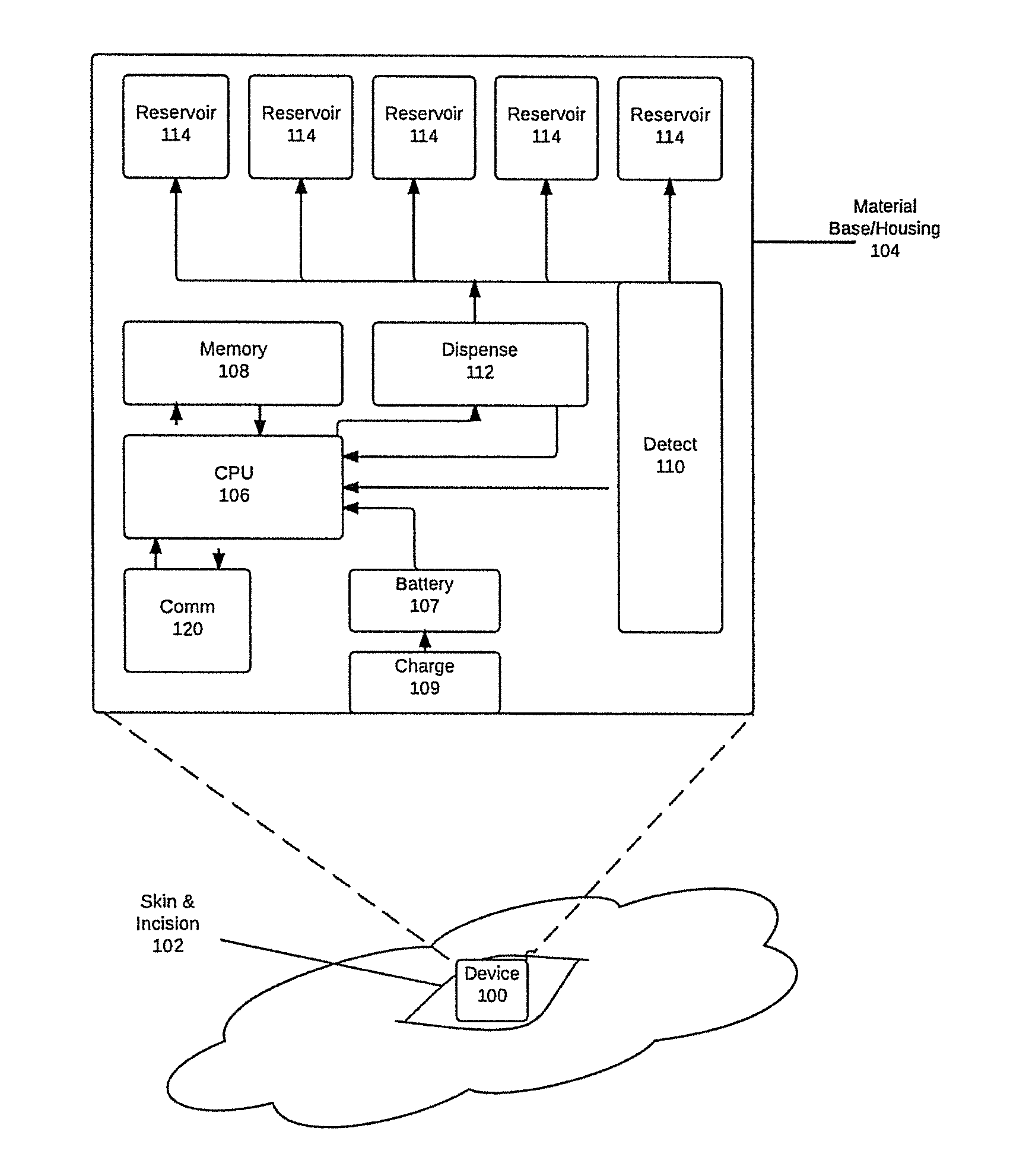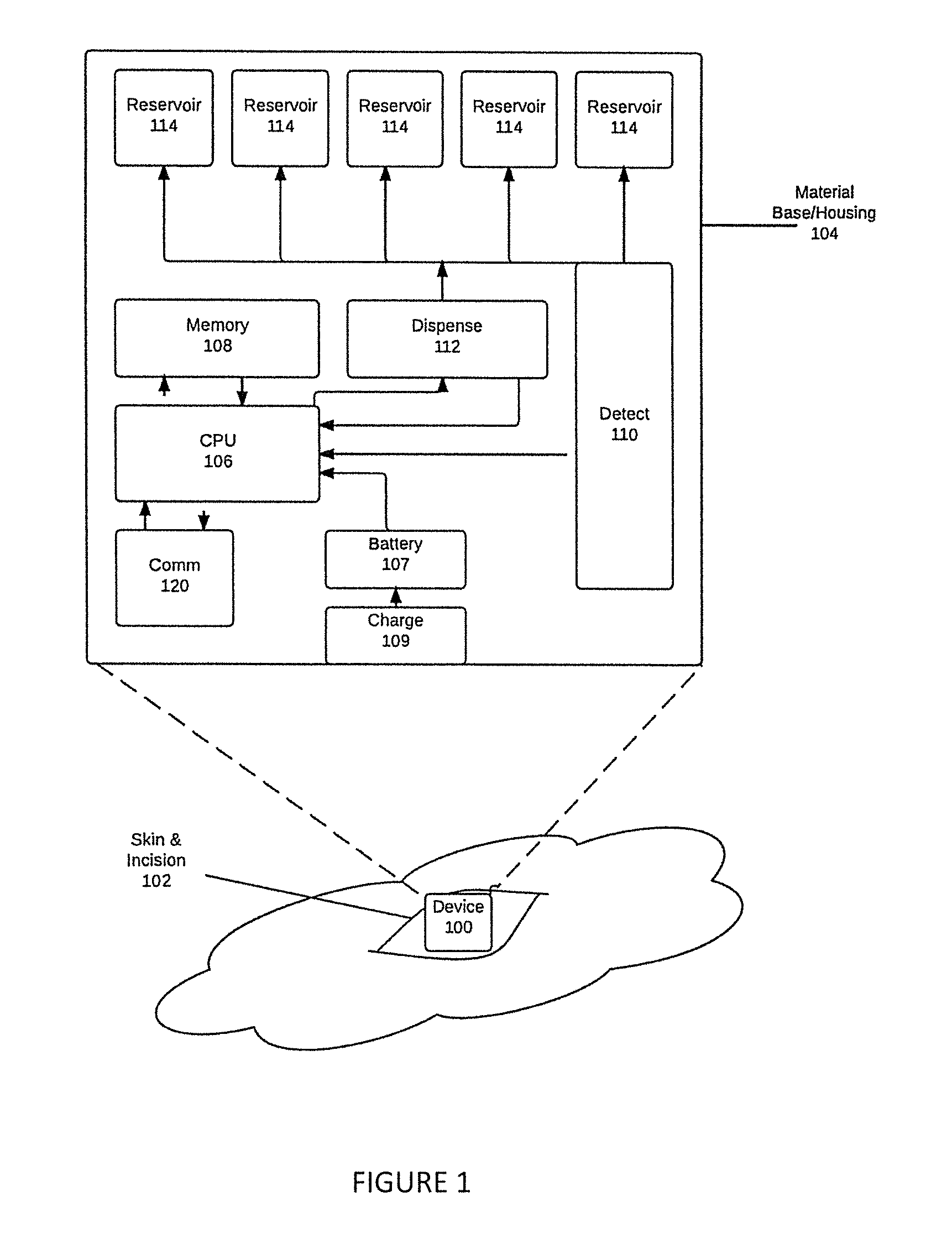Implantable device for automatic delivery of medication for allergic reactions
an automatic delivery and allergic reaction technology, applied in the field of implantable devices, can solve the problems of affecting the safety of patients, unable to meet the requirements of patients, so as to save many lives and mitigate the risks
- Summary
- Abstract
- Description
- Claims
- Application Information
AI Technical Summary
Benefits of technology
Problems solved by technology
Method used
Image
Examples
Embodiment Construction
[0010]This invention includes a small (micro- or nano-scale) implantable device, operative to detect an allergic and / or anaphylactic reaction, and release stored medication (such as epinephrine, steroid, or antihistamine for example) for controlling the reaction. A method of detecting and measuring the levels of molecules indicates the occurrence of an allergic reaction, such as histamine, leukotrienes, prostaglandins, cytokines, and other inflammatory mediators and mast cell degranulation byproducts. The result of this detection signals the device to begin the controlled release of medication.
[0011]A minimally invasive surgical process is used to implant the device within, or below, the skin in either subcutaneous tissue, muscle, fat, joint spaces, or body cavities of any type. A controlled drug delivery system 104 within the device releases medication within the body, in an appropriate dosage, when elevated levels of chemical biomarker molecules of allergic or anaphylactic respons...
PUM
| Property | Measurement | Unit |
|---|---|---|
| biocompatible | aaaaa | aaaaa |
| time | aaaaa | aaaaa |
| voltage | aaaaa | aaaaa |
Abstract
Description
Claims
Application Information
 Login to View More
Login to View More - R&D
- Intellectual Property
- Life Sciences
- Materials
- Tech Scout
- Unparalleled Data Quality
- Higher Quality Content
- 60% Fewer Hallucinations
Browse by: Latest US Patents, China's latest patents, Technical Efficacy Thesaurus, Application Domain, Technology Topic, Popular Technical Reports.
© 2025 PatSnap. All rights reserved.Legal|Privacy policy|Modern Slavery Act Transparency Statement|Sitemap|About US| Contact US: help@patsnap.com


